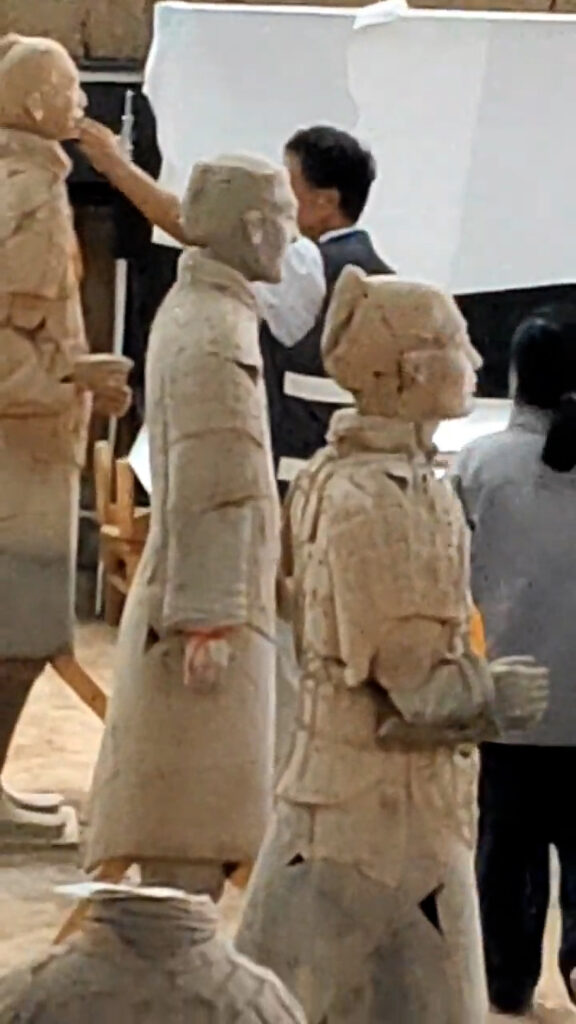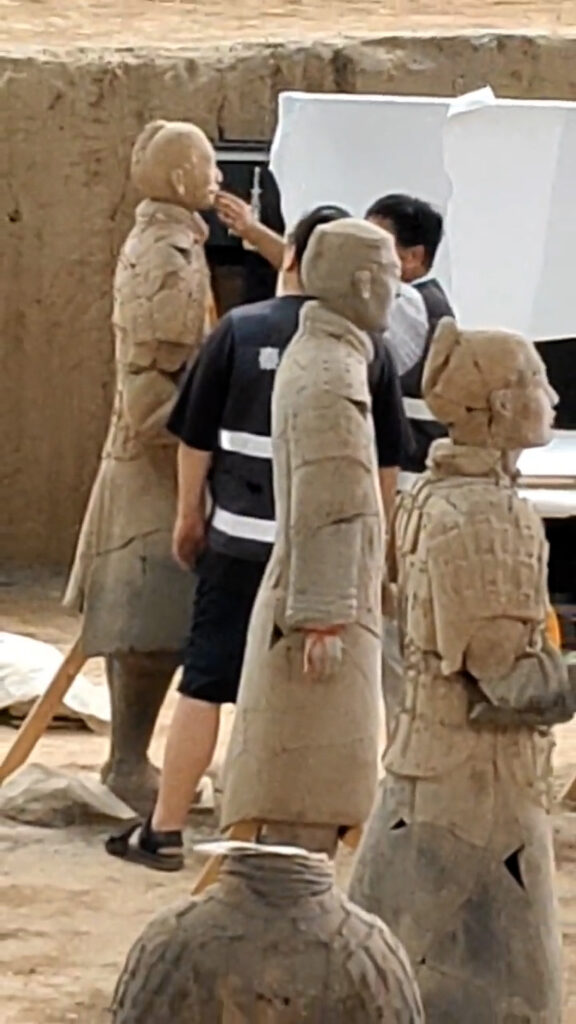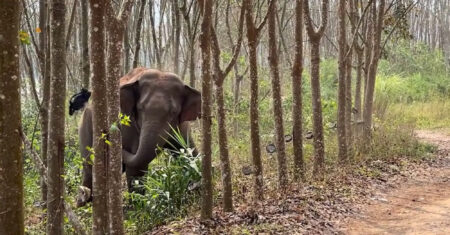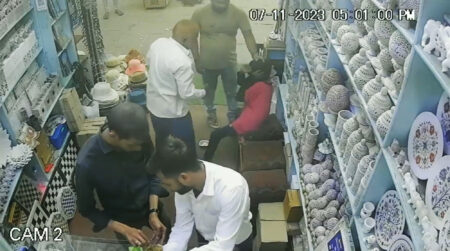An archaeologist who was caught on camera handling an ancient sculpture of a warrior with his bare, sweaty hands has caused online outrage.
The expert was seen carelessly touching the face of a terracotta sculpture, part of the world-famous Terracotta Army, located at the tomb of China’s First Emperor in Xi’an, in the north-western Shaanxi Province.
The footage – shared later on Douyin, China’s version of TikTok – shows several staff members inside the ancient tomb.
One of them, wearing an attire with ‘Qin Mausoleum Archaeology’ written on it, is seen wiping the sweat off his forehead with a towel.
He then puts on his glasses and goes over to one of the terracotta sculptures and touches it without wearing gloves.
The video sparked online fury, with netizens criticising his apparent lack of professionalism and risking causing potential damage to the statue.
One user titled ‘Mystery man’ said in a comment: “Precious cultural relics will be destroyed in the hands of some people.”
While ‘Liuliu Great Demon King’ said: “Treating the terracotta warriors as if they’re simply clay-fired dummies.”

And ‘under the knife’ wrote: “Will there be added fingerprints on the Terracotta Warriors during the restoration process?”
Staff members from the Terracotta Warriors and Horses Museum later responded saying it is absolutely prohibited to touch the sculptures directly with bare hands, and gloves are required for everyone, including the staff.
The staff added that if the leadership becomes aware of this incident, it will certainly be addressed.
The museum also emphasised visitors are not allowed to touch the terracotta warriors as sweat, harmful substances, smoke, and even flash photography can cause erosion and damage to the figures.
The Terracotta Army, dating from the late 200s BC, depicts the armies of Qin Shi Huang, China’s first emperor.
Discovered in 1974 near Xi’an, Shaanxi, they are funerary sculptures meant to protect the emperor in the afterlife.

The collection includes detailed life-sized warriors, chariots, and horses of varying heights based on their rank, with the generals being the tallest.
It has been estimated that there are over 7,000 terracotta warriors, horses, chariots and weaponry inside the vast burial site.



